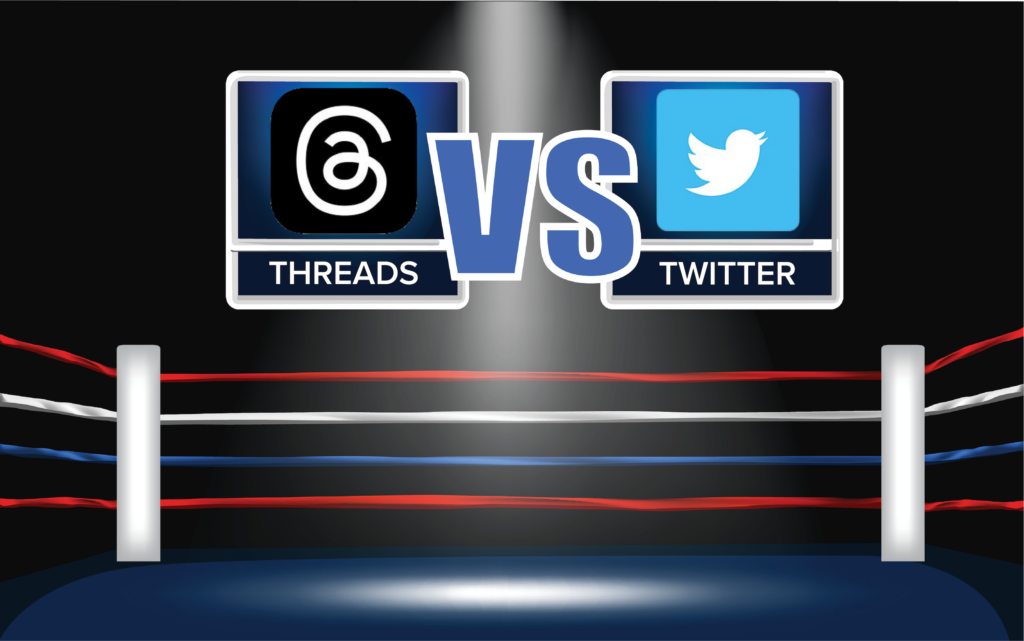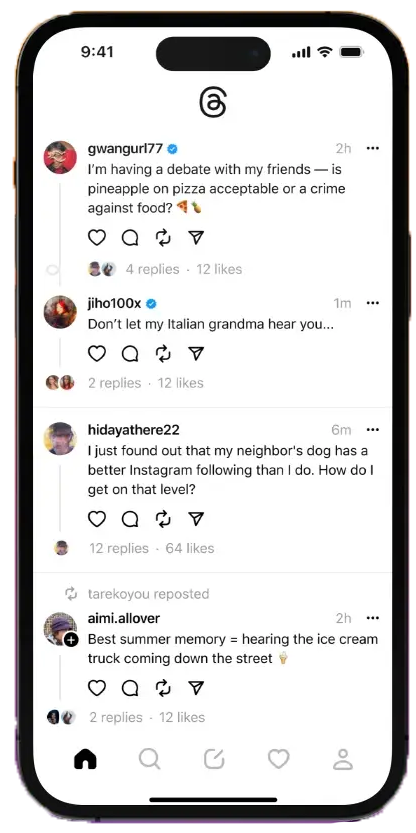The Interesting - But Way Too Early - Signs of the Threads vs. Twitter Cage Match
07/13/2023

Written by: OptiMine CEO, Matt Voda
A tantalizing headline showed up in my news feed this morning stating that user engagement was 8 times higher on Threads than for identical posts on Twitter. Whoa – this warranted some investigation especially given the high-profile initial success in new user signups on Threads, and the apparent decline of Twitter usage that suggests users are exiting Twitter to join Meta’s new Twitter-killing-app.
The user count data fight may prevent a real world, and potentially very embarrassing, Zuck vs. Musk cage match, so this data will be important to watch over the next weeks and months. For what it’s worth, my money is on Zuck in either contest. But a deeper dive into the user engagement data creates a lot more questions than answers, and poses some much bigger questions for brands who may be eyeing the new Threads app as their next advertising channel to test.
Evaluating the user engagement data, WebsitePlanet compared 30 brands that had posted the same content on both platforms, shown below:

In examining the data, I noticed two things:
- All of the brands’ Threads follower counts are a fraction of their Twitter counts
- The “engagement” stats (likes, replies) are very small on both platforms
These data points raise some questions…
Is the law of small numbers distorting the comparison?
Let’s take the Wired post data to highlight the “small numbers” issue. Their post got a whopping 9 replies on Twitter, and a total of 11 on Threads. The numbers are similarly small for the “Likes” count. Can we safely conclude that reply engagement volumes are 22% higher on Threads and will continue to be higher as time goes on? Of course not. Some of these differences might even be from Wired employees, or their friends and family, who are more enthusiastically engaging on the new Threads app. The numbers are that small.
Some users may also be showing their enthusiasm, their votes if you will, about having an alternative to Twitter and are engaging more positively. Maybe they are loving the newsfeed that is completely devoid of ads in Threads? Who knows? What we can safely conclude is that it is way too early to extrapolate these engagement numbers into the future.
Who are these Threads users and are they “the same” or are they “different”?
The eye popping 100MM user signups for Threads in the first week is truly incredible. It was so smart on Meta’s part to leverage existing Instagram accounts and eliminate much of the user signup friction. But this raises questions about who these Threads users are, are they simply an exact subset of the larger Instagram user base, do they overlap with Twitter users, are they Twitter users who have permanently left switched away from Twitter to Threads, or is it something in between?
The problem for Meta is that these users could simply be Instagram users who are now engaging with an app that has no ads (and therefore no ad revenue), have stopped or slowed their use of Instagram (which as ads and revenues) and are now simply draining Meta profits. For sure, this is a question that Meta can answer and is probably already tracking very closely. The level of profit drain will equate to the speed at which Meta will introduce ads on Threads.
If these Threads users are Twitter users who have stopped or slowed their use of Twitter, then Zuck is winning the cage match, and Threads has the chance to damage Twitter in an incredibly significant way. Meta won’t have a good way to know this answer with much precision, but Musk and company are already showing signs that they are deeply worried (when you’re losing the game, just change the goal posts):

Who cares about “engagement” anyway, and what does this mean for brands?
Threads will undoubtedly add advertising, and then brands will be faced with some real hard dollar decisions. These decisions will rely in large part on the question about who these Threads users really are.
If they are simply a subset of Instagram’s existing users, then a brand will need to ask itself whether it is worth spending money to reach users it can already advertise to on Instagram. What could save Meta on this issue is whether they come up with innovative ad delivery options, formats, content types, targeting options or other elements that give brands a new way to reach and engage customers. If a brand can engage with prospective buyers in new and unique ways on Threads, then it might be worth it.
Interestingly, if Threads represents a large number of former Twitter users, brands will have a bigger dilemma. Consider this not-very-far-fetched example: if Democrats leave Twitter for Threads, and Republicans stay on Twitter, there will be two distinct audiences on the two platforms. Most brands want to reach customers regardless of their politics, and in this scenario, may be forced to advertise on both platforms.
Who are these people?

Lastly, who cares about engagement and why does it matter? It matters a lot if a brand can measure the economic impacts to their business. OptiMine conducted a study with Twitter in the pre-Musk era that showed that paid and promoted Tweets from the four largest US mobile carriers could significantly increase positive brand sentiment and decrease negative sentiment, both of which can drive new subscriber acquisition and subscriber attrition. But simple data points like “likes” and “replies” aren’t enough to tell this story. Only sophisticated measurement and analytics like OptiMine’s can examine the incremental economic impacts on the business.
Contact us today to learn more!

